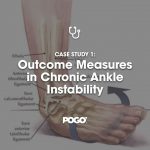Hip and Groin Symposium 2017: Part 2 Adductor Related Groin Pain
Hip and Groin Symposium 2017: Part 2 Adductor Related Groin Pain
I recently attended a Hip and Groin Symposium on all things hip and groin pain. The conference detailed key aspects of managing hip and groin pain from world leading researchers and clinicians. I’ve comprised some of the key learning’s alongside clinical research into 3 different posts. Part 2 is a comprehensive look at adductor related pain, statistics, diagnosis, management and prevention.
The hip and groin is a complex area, with a wide variety of possible injuries in numerous anatomical structures. In part 1 of this series we looked at different entities that can be the source of hip and groin pain. Figure 1 below shows these different clinical entities for groin pain, with the area in blue (adductors) the focus of today’s blog (1).
Prevalence
Adductor related pain is very common in footballers, with research on men’s professional Football finding 18% of all time loss Football injuries are related to the groin. Hip and groin pain prevalence was 21% players per season (1 in 5) (4, 5). Of the 206 injuries, 16% were minimal (1–3 days), 25% mild (4–7 days), 41% moderate (8–28 days) and 18% severe (>28 days), with a median absence of 10 days/injury. Adductor-related groin pain was the most common entity (68%) followed by iliopsoas (12%) and pubic-related (9%) groin pain. Similar high percentages of adductor related pain in kicking sports, such as Football and AFL has also been found in more recent 2017 research (3. 6). Improving treatment outcomes and preventing adductor-related groin pain has the potential to improve player availability in professional football. The highest incidence of groin pain has been reported in preseason and early season.
Assessment and Diagnosis
The diagnosis of adductor related groin pain is commonly performed through a number of tests including tenderness on palpation of the adductor longus or other adductor muscles and pain on resisted contraction. Resistance testing in outer ranges and pain on stretch can also be useful indicator to confirm diagnosis. There a number of other special tests used to include and exclude other possible diagnoses. This battery of testing, combined with a good thorough history is often correlated well to positive adductor findings on MRI (2).
Imaging (MRI) findings consistent with adductor related groin pain include degenerative changes at pubic symphysis, adductor muscle pathology at insertions, higher degrees of pubic bone marrow oedema and the secondary cleft sign (2, 3). These are key signs to look for in adductor related groin pain as up to 71% of asymptomatic football players displayed different positive MRI findings! This means lots of healthy, painfree Footballers and athletes will have similar changes present.
Early diagnosis is crucial, not only to ensure proper management but to reduce time lost to injury as groin pain, particularly adductor related pain it becomes much tougher after 2 weeks, with longer rehabilitation often required. For individuals with greater than 6 weeks of long-standing adductor related pain this can often mean 6 months or more of rehabilitation. Many athletes, from professional to my weekend warrior teammates (Football) have opted for simple ‘rest’ over the offseason, however this will often lead to a re-emergence of adductor pain early in the new pre-season training.
A thorough assessment is not only needed to determine diagnosis and often co-existing clinical entities in the groin but to measure hip ranges, strength and control through functional exercises. Identifying deficits in these areas are crucial in resolving adductor related pain symptoms.
- Outcome measures – pain and strength of adductor test
- Aim for adductor strength 1.2 time greater than abductor strength
- HAGOS – a helpful questionnaire to assess hip and groin pain – scores 50-60/100 needing to cease play and likely long rehab
- Traffic light approach for games 0-2 go (play), 3-5 modified and 6 or greater stopping play.
Risk Factors and Screening
A recent 2015 systematic review looked at risk factors for groin injury in Footballers (8). It concluded that baseline musculoskeletal screening will not identify or predict individual players who will get injured. It advocates for undertaking screening to identify current symptoms, baseline measures and monitoring in season. Recent findings that have looked at screening baseline measures of professional Football players and those that go onto have groin pain, finding that only previous groin injury is a significant risk factor.
Another systematic review by Whitacker and colleagues (2015) has found level 1 and 2 evidence that previous groin injury, higher-level of play, reduced hip adductor (absolute and relative to the hip abductors) strength and lower levels of sport-specific training are associated with increased risk of groin injury in sport. (11)
Treatment
Conservative rehabilitation consisting of strength and stability is the mainstay of treatment of adductor related groin pain. There is moderate evidence for the efficacy of conservative treatment (active exercises and multimodal treatments) and for surgery in patients with adductor-related groin pain (6). There is emerging research that shows further support for conservative management of long-standing adductor related groin pain.
Sensitive pain provocation tests determine rehab progression of strength and control based exercises. Treatment focuses on addressing range of movement, strength and control impairments of the trunk and lower body. Sport specific training to return to sport is the final stage of rehab. A simple rest approach over the offseason will not fix many incidences of groin pain, with soreness recommencing in preseason.
To read Part 1 of the series click here>>
References:
- Weir, A., Brukner, P., Delahunt, E., Ekstrand, J., Griffin, D., Khan, K. M., … & Paajanen, H. (2015). Doha agreement meeting on terminology and definitions in groin pain in athletes. British journal of sports medicine, 49(12), 768-774.
- Branci, S., Thorborg, K., Nielsen, M. B., & Hölmich, P. (2013). Radiological findings in symphyseal and adductor-related groin pain in athletes: a critical review of the literature. British journal of sports medicine, 47(10), 611-619.
- Taylor, R., Vuckovic, Z., Mosler, A., Otten, R., Jacobsen, P., Holmich, P., & Weir, A. (2017). Multidisciplinary Assessment of 100 Athletes With Groin Pain Using the Doha Agreement: High Prevalence of Adductor-Related Groin Pain in Conjunction With Multiple Causes. Clinical Journal of Sport Medicine.
- Hölmich, P., Thorborg, K., Dehlendorff, C., Krogsgaard, K., & Gluud, C. (2013). Incidence and clinical presentation of groin injuries in sub-elite male soccer. Br J Sports Med, bjsports-2013.
- Mosler AB, Weir A, Eirale C, et al Epidemiology of time loss groin injuries in a men’s professional football league: a 2-year prospective study of 17 clubs and 606 players. Br J Sports Med Published Online First: 30 June 2017. Doi: 10.1136/bjsports-2016-097277
- Drew, M. K., Lovell, G., Palsson, T. S., Chiarelli, P. E., & Osmotherly, P. G. (2016). Do Australian Football players have sensitive groins? Players with current groin pain exhibit mechanical hyperalgesia of the adductor tendon. Journal of Science and Medicine in Sport, 19(10), 784-788.
- Serner, A., van Eijck, C. H., Beumer, B. R., Hölmich, P., Weir, A., & de Vos, R. J. (2015). Study quality on groin injury management remains low: a systematic review on treatment of groin pain in athletes. British journal of sports medicine, bjsports-2014.
- Mosler, A. B., Weir, A., Hölmich, P., & Crossley, K. M. (2015). Which factors differentiate athletes with hip/groin pain from those without? A systematic review with meta-analysis. British journal of sports medicine, 49(12), 810-810.
- Tak I, Engelaar L, Gouttebarge V, et al Is lower hip range of motion a risk factor for groin pain in athletes? A systematic review with clinical applications Br J Sports Med Published Online First: 21 April 2017. doi: 10.1136/bjsports-2016-096619
- Branci, S., Thorborg, K., Bech, B. H., Boesen, M., Nielsen, M. B., & Hölmich, P. (2014). MRI findings in soccer players with long-standing adductor-related groin pain and asymptomatic controls. British journal of sports medicine, bjsports-2014. (WAS NO>4)
- Whittaker JL, Small C, Maffey L, et al Risk factors for groin injury in sport: an updated systematic review Br J Sports Med 2015;49:803-809
Lewis Craig (APAM)
POGO Physiotherapist
Masters of Physiotherapy

Featured in the Top 50 Physical Therapy Blog








